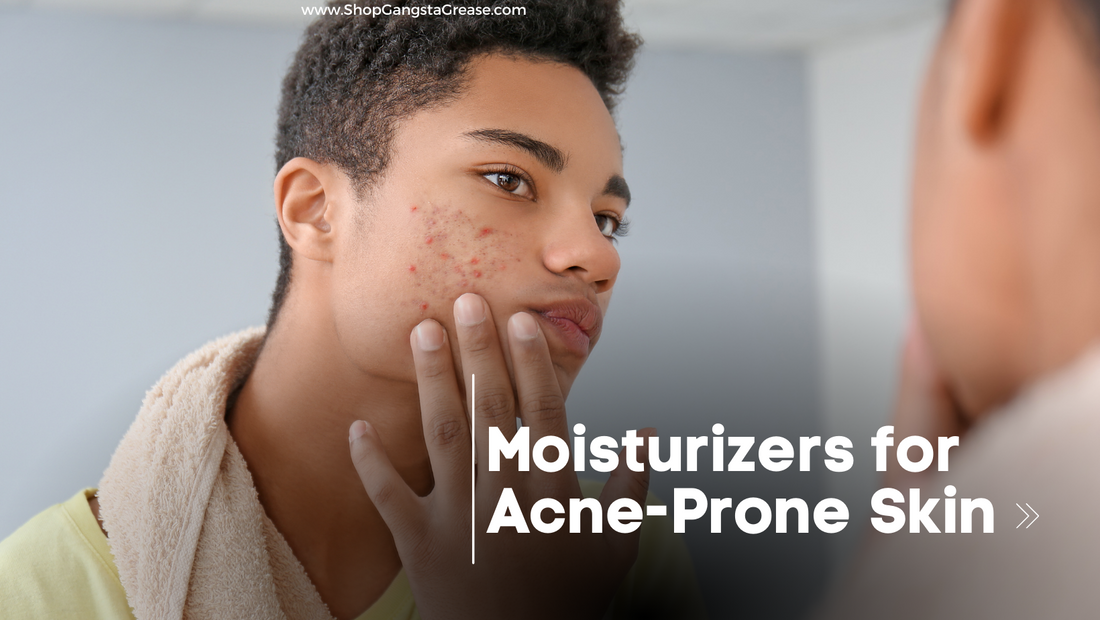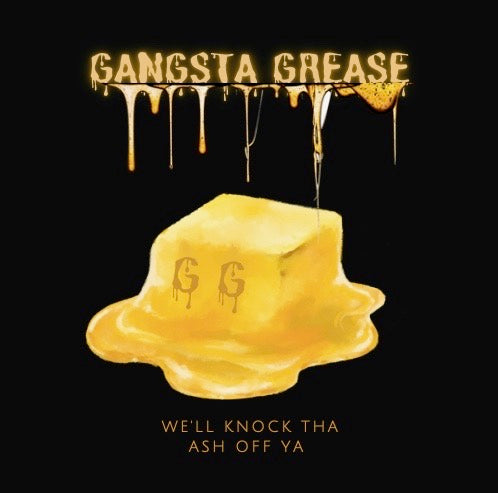
Moisturizer for Acne Prone Skin
Share
Acne-Prone Skin
“Acne” is a condition of the skin that can result in breakouts such as pimples. There are different types of acne, though they all start out the same way - the microcomedone, which is a microscopic blockage of the narrow duct extending around a fine hair follicle. Here are a few different types of breakouts that can occur:
Comedonal acne: Whiteheads and blackheads - they usually arise from oily parts of the skin (such as the T-zone), but can pop up anywhere.
- Blackhead: Normal open comedone
- Whitehead: Closed comedone that resembles a tiny white head
Sometimes, microcomedones do not progress into typical comedones, but develop underlying inflammation
Inflamed comedones: Raised acne lesions with surrounding redness (inflammation)
- Papules & pustules
- Papules: Raised bumps
- Pustules: Contain pus
- Cysts
- Cystic acne: Hormonal breakouts - usually painful pus-filled pimples that tend to occur in the lower one-third of the face or the jawline area.
Why Is It Important to Keep Acne-Prone Skin Moisturized?
It’s important to moisturize acne-prone skin as many acne treatments can be quite drying to the skin. When the skin becomes overly dry and stripped of its natural oils, it starts to produce more oil to compensate. The extra oil produced by the skin in this state can clog pores, leading to more breakouts. A non-comedogenic moisturizer can help your skin combat dryness while keeping the oil balance in check. The term “non-comedogenic” refers to a product's ability to clog pores and cause acne - a non-comedogenic moisturizer is a moisturizer that contains ingredients that will not clog pores. A good moisturizer can help increase the rate of cell turnover, which can reduce the signs of aging as well as inflammation associated with breakouts. You want to use something as low on the comedogenic scale as possible. The comedogenic scale is a tool used to measure the likelihood of a product causing the pores to be clogged, thus causing acne.
Comedogenic Ratings
|
Comedogenic Rating |
Effect |
|
0 |
No risk - will not clog pores |
|
1 |
Low risk - slight chance of clogging pores |
|
2 |
Moderately low risk - will not clog pores for MOST people |
|
3 |
Moderate risk - breakouts depend on skin type. Many people will break out |
|
4 |
Fairly high risk - most people will break out but depends on skin type |
|
5 |
High risk - will cause breakouts. Few people can tolerate this type of oil |
What to Look for in a Moisturizer for Acne-Prone Skin
- You will want to avoid ingredients such as sodium lauryl sulfate, coconut oil and petrolatum (if used with other products, as previously mentioned), as well as fragrance, and isopropyl myristate.
- Look for moisturizers that are non-occlusive (doesn’t obstruct the pores) such as hyaluronic acid or glycerin.
- If you’re looking for a moisturizer for acne scars, look for moisturizers such as rosehip oil, vitamin C, lactic acid, niacinamide, and azelaic acid
- Since acne is often associated with inflammation, look for anti-inflammatory ingredients such as tea tree oil, Chinese rhubarb, Indian chrysanthemum, purslane or turmeric.
Due to most acne skin treatments making the skin more sensitive to the sun, it may be beneficial to look for moisturizers with SPF activity. You can also choose to separate your moisturizer and sunscreen, but you will want a minimum SPF of 30.

Daily Skincare Routine for Acne-Prone Skin
Before using a moisturizer, you’ll want to make sure that you:
- Cleanse well - pick something that is gentle but contains benzoyl peroxide or salicylic acid
- Benzoyl peroxide (BPO): Kills bacteria that causes acne breakouts. Can be purchased over-the-counter without a prescription in strengths 2.5% to 10% (studies show that lower strength products are as effective as higher strength products and dry out the skin less).
- If you’re looking for a low strength BPO cleanser, check this one out. It’s gentle at 2.6% and suitable for all skin types.
- If you’re looking for a maximum strength BPO cleanser, check this one out. This is the highest strength available over the counter at 10%.
- BPO can potentially cause dry skin, so you’ll want to make sure you do not skip the moisturizer.
- Salicylic acid: May help unclog pores and prevent new breakouts. This is available over-the-counter (no prescription needed) in strengths 0.5% to 2%.
- Can cause mild skin irritation such as stinging.
Pro-tip: If you have never used these products before or are unsure of what strength to use, start off with the lowest strength possible and evaluate your skin. If you decide to increase the strength, start off low and go slow. You will want to increase over the space of a few weeks to help your skin adjust. It may take 2-3 months before you start to see the effect.
- Use a toner
- If you’re looking for a great toner for oily and acne-prone skin that reduces the appearance of pores, gently exfoliates your skin, and also leaves your skin super glowy, check this one out.
Pro-tip: If you use retinol at night, only apply toner every other morning. If the toner still irritates your skin after switching to an every other day method, toners may not be right for your skin.
- If using acne medications, you’ll want to apply them after applying toner (or after cleansing, if not using toner)
- Apply moisturizer - find the right moisturizer for your skin and its needs. Gels and lotions are generally lighter than creams. If you’re looking for a non-comedogenic oil (which is also good for removing makeup), check out our list above.
- If choosing to use oil, it should be used as the last step of your skincare routine. You only need a few drops (about 2-3), rub it in between your hands and pat on the face.
- Apply sunscreen - many acne treatments make the skin sensitive to sunlight. Apply sunscreen with an SPF of at least 30.
Looking for An Oil for Acne-Prone Skin?
Those with acne-prone skin will want to use an oil that is low on the comedogenic scale. A few excellent examples of oils with low comedogenic ratings include:
- Hemp seed oil: 0
- Squalane oil: 0
- Argan oil: 0
- Sunflower oil: 0
- Safflower oil: 0
- Castor oil: 1 (increases cell turnover)
- Grapeseed oil: 1
- Hazelnut oil: 1
- Pomegranate oil: 1
- Maracuja (passion fruit seed) oil: 1-2
- Neem oil: 1-2 (but has strong antibacterial properties)
- Jojoba oil: 2
You will want to stay away from oils higher on the comedogenic scale such as coconut oil (comedogenic rating of 4). I’ve also been asked about moisturizing agents such as Vaseline: Petrolatum (which is petroleum jelly or Vaseline) itself is non-comedogenic, but it is an occlusive moisturizing agent meaning it can trap comedogenic ingredients in the skin and that is what may cause a breakout.
Black Seed Oil
Black seed oil gets special mention as it is an oil that has anti-inflammatory and antimicrobial activity, similar to coconut oil but lower on the comedogenic scale. Black seed oil has a comedogenic rating of 2, meaning it has a moderately low risk of clogging pores. If deciding to use black seed oil, try doing a patch test - use a small amount on a small patch of skin to see how your skin reacts to it. If it does not cause any irritation, it is most likely ok to use. If it does cause irritation or any other type of reaction, don’t use it.
If you’re looking for a good brand of black seed oil to use, I use this one here - It’s cold-pressed and a non-GMO product. I’ve been using this brand for years for many different purposes and wholeheartedly recommend it!
Black seed oil helps to reduce the appearance of acne scars, and has also been found to significantly reduce the incidence of acne.
As an Amazon Associate I earn from qualifying purchases.
Do you have acne-prone skin and use certain oils on your face? Let us know in the comments if you have a favorite type of oil!
As always, thanks for reading.
Love, Peace & Gangsta Grease!


1 comment
Hey! Super helpful blog post, I have acne prone skin and often have a hard time finding an oil that doesn’t cause more break-outs for me. I take black seed oil by mouth whenever I start feeling sick but never thought about applying it topically. I’ll have to try that next. Thanks!